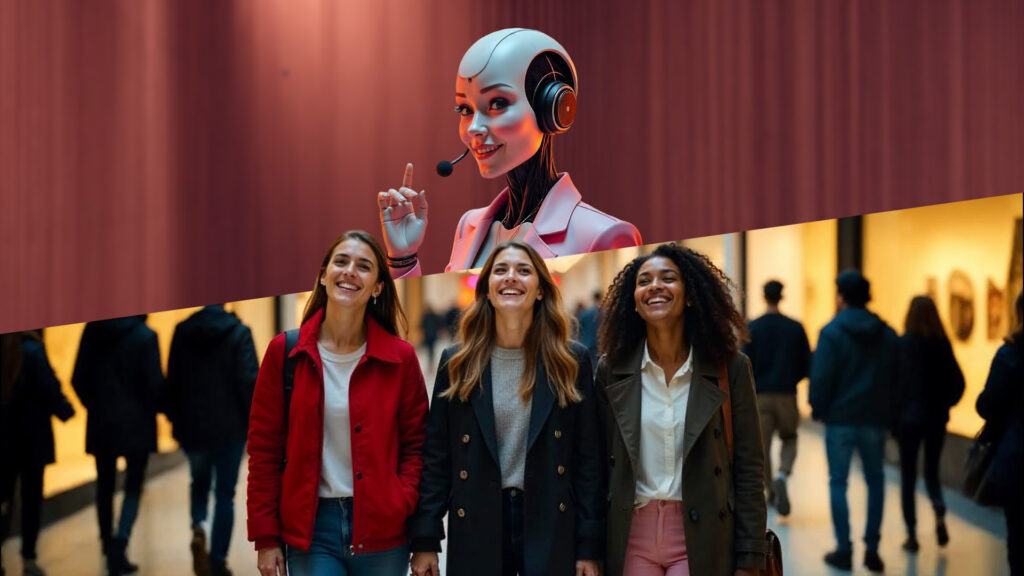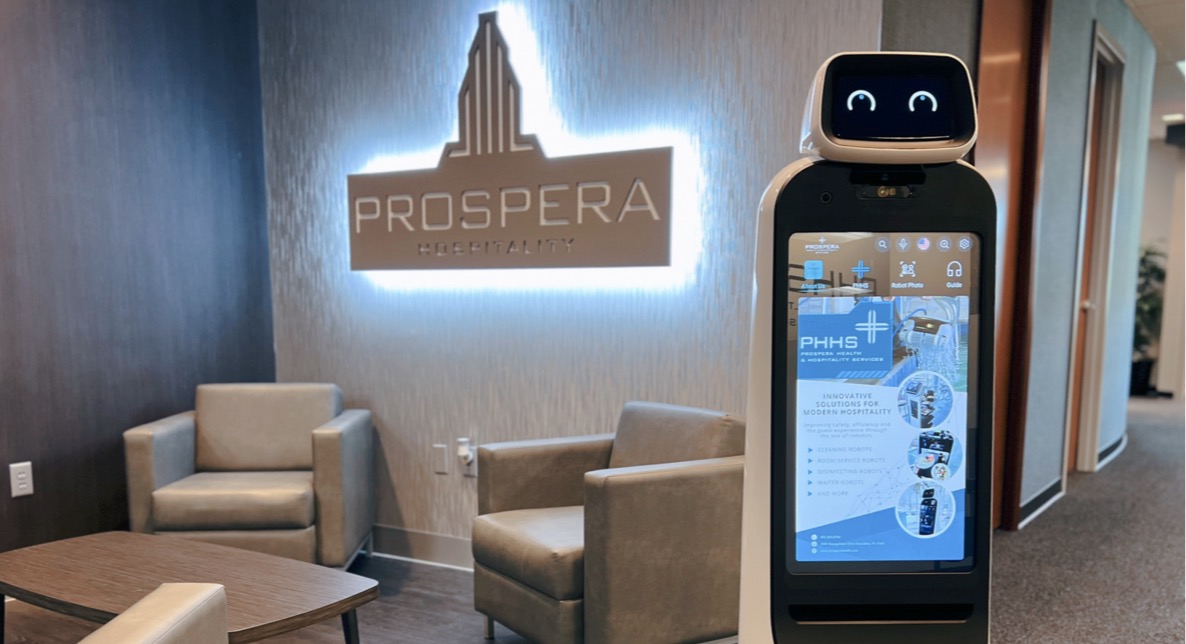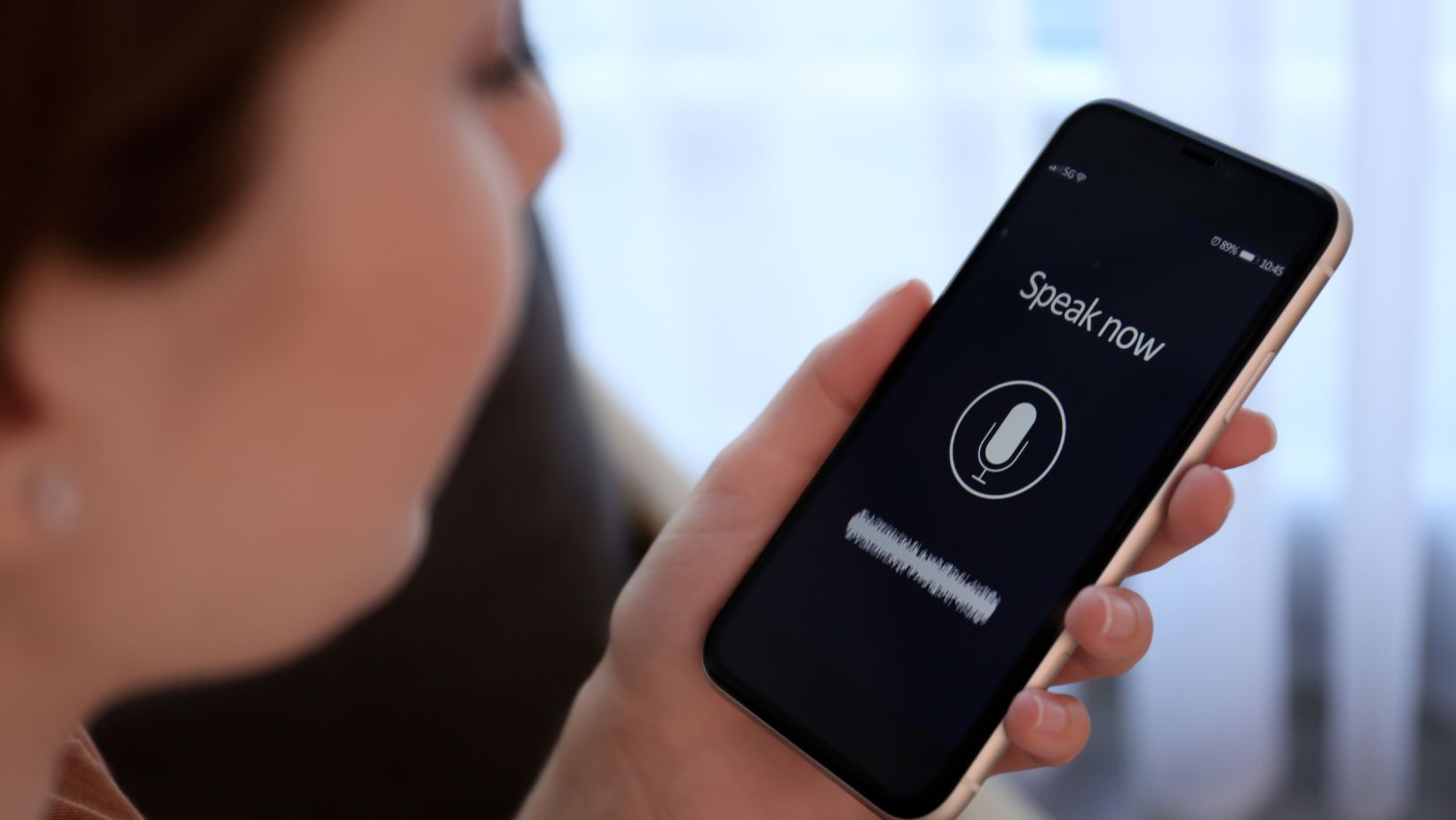Good customer service doesn’t only ‘serve’ when asked to – it takes care of the customer at every step of their journey from entering the store to leaving with a few extra products in their cart. It is not simple, and it requires the full attention of an employee – that is, until AI concierges prove capable of handling the task independently.
What we are referring to here is beyond the online shopping assistant that pops up with recommendations based on your search history; it’s for a reality where you enter a brick-and-mortar store and your AI assistant ‘whispers’ in your ear what best suits you, what goes along with the other clothes you own, and even budgets your entire spending spree.
Imagination runs amok with robots and holograms that the not-so-distant future might bring, but let’s focus for now on the already explored reality of the voice coming from your device, how it can be applied, and whether it truly is an advantage compared to a human.
From One too Many to One to One
The traditional definition of a concierge is of a hotel employee who takes care of all the guests’ needs. Common with luxury hotels and brands, the concierge offers personalized care in a one-to-one fashion for those who can afford it. For the customer, it’s a unique buying experience walking into a store and having the same person greet you, remember your purchase, escort and recommend new items; for the business, it’s a unique opportunity to build trust and upsell.
Can AI replace human interaction at that level? Arguably not yet, but what it can do is make a personalized concierge accessible to luxury brands that opt for a high-tech approach, as well as to non-luxury ones that cannot apply the one-to-one model in the three stages of the customer journey.
Pre-Sale
Before even going to the store, the moment you plan to step inside the shopping mall, the AI anticipates what you might need. How? Because, depending on how it is applied, it could be your future AI Personal assistant that grants permission to the outlet’s voice concierge and kindly advises you to walk in for the pair of shorts you were looking for. Not only that, it can also suggest the best time to visit the store, what to priorities from your list, and a new offer to check out in the meantime.
In-Store Experience
While inside the store, the concierge would fulfil the role of a shopping assistant and more. From guiding you to the right section, finding your best fit, and recommending the accessories that tag along with it. The ‘more’ part refers to the data the concierge has about your buying habits, ensuring you are not led astray by any product or perks that do not suit you. In fact, it could create personalized loyalty perks based on you, rather than the default ones the shop offers.
The concierge service will tailor your loyalty program to your specific needs. For example, a brand can design Custom Pins embodying its unique cultural identity and gift them to customers, making them feel personally valued and significantly enhancing their customer service experience.
Additionally, pins can be personalized with custom elements to make each one unique. The custom pin process is simple and efficient, allowing you to create a unique and distinctive pin quickly.
It’s already happening in some ways, with H&M’s Interactive Mirror, which provides fashion tips, takes selfies, and displays the vast H&M catalogue on the big screen or your phone. A limited use of AI that has already reached 150 million people in 25 countries worldwide.
After-Sales Support
The real value, aside from the service’s apparent accessibility to everyone, not just high spenders, lies in the after-sales support and the AI’s ability to build a long-term relationship by checking in in a non-intrusive way and offering personalized perks along the way.
Not the phone notification with a ‘15% off this week’ offer, but a kind reminder to consider returning the new jacket for a sleeker one that just appeared in store. Your concierge knows you don’t like promotions, but would pay a hefty amount for a quality leather jacket each new season.
Voice Concierges Are Not Chatbots!
While a chatbot answers, a concierge is more of a personal assistant who anticipates. It’s common to confuse the notion of an AI assistant with that of a chatbot, given the widespread popularity of the latter. Think of it in simpler terms, the assistant won’t likely ever have you say or type ‘I want to talk to a human’ to get the job done.
Practical Application of Voice Concierges In Outlets
Outlets are the place where AI marries AR (Augmented Reality) and VR (Virtual Reality) to provide the personalized experience required.
The last two are already adopted by big brands; yet, there seems to be a missing link between providing customers with an AR view of the new accessory and them purchasing it – this is where the AI voice concierge would kick in.
How Could a Concierge Work?
The potential application in store could combine proximity-based triggers, inventory and seasonal-based prompts, along with one of two options – your personal assistant/agent getting access to the store and acting as a concierge or the store’s concierge becoming your guide. It all depends on the one thing needed to make this work above everything, data!
If you’re walking next to an item and your concierge (or the store’s) advises you on how this new pair of jeans complements your collection of shirts, does that cross the line into the customer’s privacy? No answer yet, as we have yet to test the limit of how ‘personal’ an AI assistant can get.
One way to grasp how deeply personalized these retail concierges could become is to look outside the shopping aisle. The underlying speech-to-text pipelines and emotion-tracking embeddings are already powering some of the internet’s most bespoke experiences, including AI porn chat platforms where a user can design an entire persona, voice timbre, slang preferences, even memory of past “dates,” and have it respond in milliseconds. Strip away the adult use case and what remains is a robust architecture for tailoring dialogue, tone, and recommendations to a single individual, all based on a rolling profile of likes, dislikes, and prior interactions.
Transplant that same conversational core into an outlet corridor and the possibilities get interesting. A customer lingering in front of the sneaker wall could hear a low-key suggestion that a limited-edition colorway matches last season’s jacket they previously browsed online. In effect, retail gains a mature dialogue engine that’s already been stress-tested on far more sensitive data, turning privacy-respectful personalization from a moonshot into a next-quarter feature.
Will The Human Element Still Be Needed?
The history of marketing has taught us that people buy with emotions, and AI personal assistants, such as concierges in our case, are the closest thing technology offers to emulating what humans do best. From the store’s perspective, the problem lies in the following: Can we brand the concierge, and how can we ensure there is as little human interaction as possible?
In other words, how can we make the non-scalable, scalable? AI concierges seem to be the best next big bet in getting to the point of offering one-on-one interaction for every customer that walks in, and sneaking in the hours of the day that a store employee can’t. We do, however, have evidence of Amazon’s self-checkout, which attempted to implement non-human-run stores worldwide and ultimately found that it required more humans than a traditional store to keep them operational. The “Just walk out” didn’t make it, so what can we learn from that?
The Assistant May be Virtual, but the Experience is Personal
In retail we have hard proof that the higher the quality, the more a person is involved in the sales process and big brands will try to make the difference using exactly what’s left to do better in a world where everyone has a personal AI whispering the deal of the day in their ears.
What if then, to close in with an alternative we think of customer loyalty in the future as a game of balance. Juggling between the human and machine could be the next element that has the marketing teams of big brands base their entire upsell strategy on.






